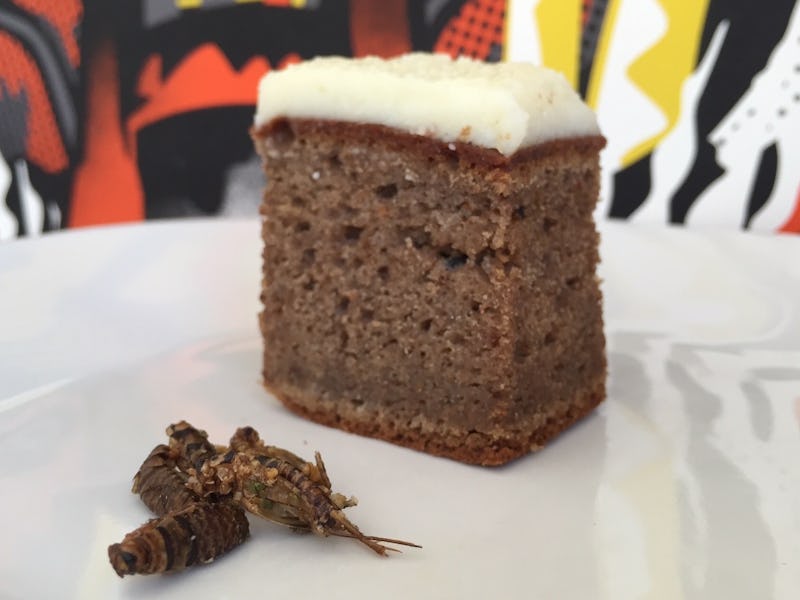Bug-Based Cooking Goes Gourmet With High-Protein Cricket Flour
Is it possible to make bug-based cuisine delicious?

Squeamish eaters better buck up. Meat is becoming more costly to farm, both financially and environmentally, so protein seekers will soon be forced to source their nutrition elsewhere. For people trying to stay cheap and green, there’s one obvious option for a protein fix: Bugs.
The good news is that entomophagy has gone upscale. Instead of crunching through exoskeletons or picking wings out of their teeth, bug eaters will fold ground-up insects into existing recipes, surreptitiously incorporating protein into meals without sacrificing flavor. Ideally, future chefs will make bug eaters of unwitting diners. To prove this is possible, Inverse staffers were put up to a cricket cake taste test.
The recipe for banana-maple cricket cake featured by Next Millennium Farms, an organic insect farm in central Ontario, promised “cricket perfection.” With four eggs, a stick of melted butter, a half-cup of maple syrup, and two mashed-up bananas forming the cake’s base, its flavor was going to be hard to screw up.
But the next step called for a quarter cup of Next Millennium’s Protein 2050 cricket powder, the company’s gluten-free, zero-carb insect flour. I dared myself to take a lick of the dark brown powder, which, disconcertingly, had the texture and appearance of ash. Thankfully, its flavor leaned more earthy than funerary, like a danker version of the whey protein in DIY soylent.
Cricket cake is indistinguishable from its flour-based counterpart.
Not that the powder’s flavor mattered once it was folded into the batter; by the time it was in the oven, it was indistinguishable from the cricket-free cake baking alongside it. Dressed with classic cream cheese frosting, the cakes were virtually twins, at least in appearance and scent. Would a taste test reveal the cricket cake’s buggy nature?
Judging by the reactions of Inverse staffers, gourmet entomophagy has a bright future ahead of it. While some pointed out that the cricket cake was a slightly deeper shade of brown, sniffing and visual inspection revealed little else. As taste testers struggled to describe differences in flavor — “There’s something going on that could be more insectoid,” said writer Ben Guarino, citing “mulchy tones” — few actually succeeded in differentiating the cricket cake from its bug-free brother.
As far as protein content goes, bug powder is a much more efficient delivery system than meat. Two tablespoons, or 12 grams, of cricket flour runs about 55 calories and packs 7.6 grams of protein. The equivalent weight in blade steak, on the other hand, only carries 3.3 grams of protein.
We’re not starved for protein yet — that might explain why 113 g of cricket flour costs about $15 — but at the rate meat production is ravaging the environment, insect eating is looking like more of an inevitability than a mere possibility. Folding in ground-up bugs, at least, won’t force chefs to choose between flavor or nutrition. The only decision they’ll need to make is whether or not to tell.